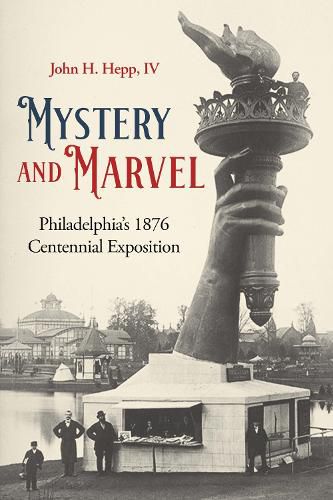Readings Newsletter
Become a Readings Member to make your shopping experience even easier.
Sign in or sign up for free!
You’re not far away from qualifying for FREE standard shipping within Australia
You’ve qualified for FREE standard shipping within Australia
The cart is loading…






Using narratives from fair-goers, this book examines the technological enthusiasm of Victorian society at the 1876 Philadelphia World's Fair and the resulting transition from agricultural republic to industrial empire. The Centennial was America's first world's fair, taking place only twenty-five years after the first international exposition in London. The exhibition was a paean to progress by people fascinated by science and technology. The organizers - largely leading Pennsylvania industrialists and merchants - wanted to show the world that the United States was as advanced as any nation in Europe and for the most part their plan succeeded. Everyday Americans attended the fair to be reassured of their nation's economic and technological past, present, and future. Mystery and Marvel looks at the 1876 Centennial Exposition through the eyes of the ten million visitors to the fair to help us understand the technological enthusiasm of middle-class Victorians. Although this enthusiasm was not unbounded and was occasionally tinged with a combination of nostalgia and uncertainty, overall the women and men of the late nineteenth century were usually happy to be part of a world they thought was as modern and as cutting edge as the one we live in today. In and around the buildings that appeared in the city's Fairmount Park that spring and summer were the physical embodiments of this culture. The sights, the sounds, and even the smells of the exhibition presaged the coming of a modern America. In 1876 Philadelphia was the nation's largest manufacturing city and Pennsylvania one of the most important industrial states. The exposition can serve as a wonderful lens to examine America's shift from the young agricultural republic of 1800 to the industrial empire of 1900. AUTHOR: John Henry Hepp, IV, is professor emeritus of history at Wilkes University and was born and raised in greater Philadelphia. His teaching and research interests center on the effects of technological and economic change on everyday urban life over the last four centuries or so. He has written books, articles, and encyclopedia entries on a variety of Philadelphia topics, concentrating on the period 1850 to 1940. He has been interested in the Centennial since childhood, when his grandparents would tell him stories of the fair when they drove through Fairmount Park. 43 b/w illustrations
$9.00 standard shipping within Australia
FREE standard shipping within Australia for orders over $100.00
Express & International shipping calculated at checkout
Using narratives from fair-goers, this book examines the technological enthusiasm of Victorian society at the 1876 Philadelphia World's Fair and the resulting transition from agricultural republic to industrial empire. The Centennial was America's first world's fair, taking place only twenty-five years after the first international exposition in London. The exhibition was a paean to progress by people fascinated by science and technology. The organizers - largely leading Pennsylvania industrialists and merchants - wanted to show the world that the United States was as advanced as any nation in Europe and for the most part their plan succeeded. Everyday Americans attended the fair to be reassured of their nation's economic and technological past, present, and future. Mystery and Marvel looks at the 1876 Centennial Exposition through the eyes of the ten million visitors to the fair to help us understand the technological enthusiasm of middle-class Victorians. Although this enthusiasm was not unbounded and was occasionally tinged with a combination of nostalgia and uncertainty, overall the women and men of the late nineteenth century were usually happy to be part of a world they thought was as modern and as cutting edge as the one we live in today. In and around the buildings that appeared in the city's Fairmount Park that spring and summer were the physical embodiments of this culture. The sights, the sounds, and even the smells of the exhibition presaged the coming of a modern America. In 1876 Philadelphia was the nation's largest manufacturing city and Pennsylvania one of the most important industrial states. The exposition can serve as a wonderful lens to examine America's shift from the young agricultural republic of 1800 to the industrial empire of 1900. AUTHOR: John Henry Hepp, IV, is professor emeritus of history at Wilkes University and was born and raised in greater Philadelphia. His teaching and research interests center on the effects of technological and economic change on everyday urban life over the last four centuries or so. He has written books, articles, and encyclopedia entries on a variety of Philadelphia topics, concentrating on the period 1850 to 1940. He has been interested in the Centennial since childhood, when his grandparents would tell him stories of the fair when they drove through Fairmount Park. 43 b/w illustrations